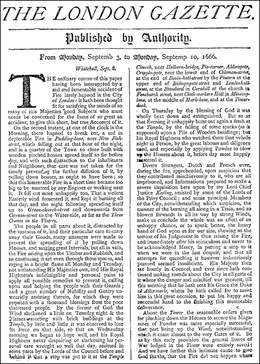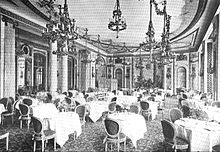https://en.wikipedia.org/wiki/Jack_London
 Nelson's Column during the Great Smog | |
| Date | 5–9 December 1952 |
|---|---|
| Location | London, England |
| Coordinates | 51.507°N 0.127°W |
| Casualties | |
| 100,000 injured (1952 government estimate)[1] | |
| Unknown number affected by breathing difficulties, lung cancer and bronchitis | |
| Deaths | |
The Great Smog of London, or Great Smog of 1952, was a severe air pollution event that affected London, England, in December 1952. A period of unusually cold weather, combined with an anticyclone and windless conditions, collected airborne pollutants—mostly arising from the use of coal—to form a thick layer of smog over the city. It lasted from Friday 5 December to Tuesday 9 December 1952, then dispersed quickly when the weather changed.[3][4]
The smog caused major disruption by reducing visibility and even penetrating indoor areas, far more severely than previous smog events, called "pea-soupers".[5] Government medical reports in the weeks following the event estimated that up to 4,000 people had died as a direct result of the smog[1] and 100,000 more were made ill by the smog's effects on the human respiratory tract. More recent research suggests that the total number of fatalities may have been considerably greater, with estimates of between 10,000 and 12,000 deaths.[1][2]
London had suffered since the 13th century from poor air quality[6][7] and diarist John Evelyn had written about "the inconveniencie of the aer and smoak of London [sic]" in Fumifugium, the first book ever written about air pollution, in 1661.[8] However, the Great Smog was many times worse than anything the city had ever experienced before: it is thought to be the worst air pollution event in the history of the United Kingdom,[9] and the most significant for its effects on environmental research, government regulation, and public awareness of the relationship between air quality and health.[1][8] It led to several changes in practices and regulations, including the Clean Air Act 1956.[10][11]
Background
Sources of pollution
Battersea Power Station in 1938https://en.wikipedia.org/wiki/Great_Smog_of_London
A panorama of the City of London in 1616 by Claes Visscher. The tenement housing on London Bridge (far right) was a notorious death-trap in case of fire; much would be destroyed in a fire in 1633.[15]
The London Gazette for 3–10 September, facsimile front page with an account of the Great Fire.
https://en.wikipedia.org/wiki/Great_Fire_of_London
The Ritz under construction in October 1905
https://en.wikipedia.org/wiki/The_Ritz_Hotel,_London
The Palm Court of the Ritz in 1907
Dining Room at the Ritz
Charlie Chaplin at the Ritz in 1921
https://en.wikipedia.org/wiki/The_Ritz_Hotel,_London
The future Edward VIII, a regular at the hotel in the 1930s, where he practised his dancing skills.
https://en.wikipedia.org/wiki/The_Ritz_Hotel,_London
Elevation diagram of the Ritz
https://en.wikipedia.org/wiki/The_Ritz_Hotel,_London
The Marie Antoinette Suite in 1914
https://en.wikipedia.org/wiki/The_Ritz_Hotel,_London
The original Ritz ballroom in 1906
https://en.wikipedia.org/wiki/The_Ritz_Hotel,_London












No comments:
Post a Comment